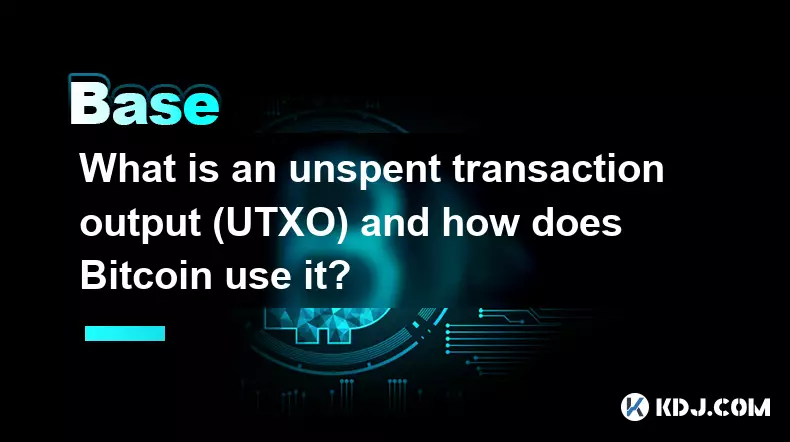-
 bitcoin
bitcoin $102182.982207 USD
-0.92% -
 ethereum
ethereum $3438.744518 USD
0.12% -
 tether
tether $0.999933 USD
0.02% -
 xrp
xrp $2.405093 USD
0.05% -
 bnb
bnb $956.306114 USD
-0.53% -
 solana
solana $153.028851 USD
-1.23% -
 usd-coin
usd-coin $0.999800 USD
-0.03% -
 tron
tron $0.294898 USD
-1.08% -
 dogecoin
dogecoin $0.171428 USD
-0.58% -
 cardano
cardano $0.551186 USD
-1.15% -
 hyperliquid
hyperliquid $38.755878 USD
0.04% -
 chainlink
chainlink $15.298460 USD
-0.05% -
 bitcoin-cash
bitcoin-cash $516.067428 USD
1.68% -
 stellar
stellar $0.280726 USD
-0.42% -
 zcash
zcash $518.919369 USD
18.01%
What is a re-entrancy attack and how does it exploit smart contract vulnerabilities?
Re-entrancy attacks exploit poorly ordered state changes in smart contracts, allowing hackers to recursively withdraw funds before balances update.
Nov 12, 2025 at 07:59 pm

Understanding Re-Entrancy Attacks in Smart Contracts
1. A re-entrancy attack is a critical security vulnerability that targets smart contracts on blockchain platforms, particularly those built on Ethereum. This exploit occurs when a malicious contract repeatedly calls back into the victim contract before the initial execution completes. The attacker takes advantage of the order in which state changes and external calls are executed.
2. In a typical scenario, a vulnerable contract sends funds to an external address before updating its internal balance or state. The receiving contract, controlled by the attacker, contains a fallback function that automatically triggers another call to the victim’s withdrawal or transfer function. Because the state hasn’t been updated yet, the system still believes funds are available, allowing repeated withdrawals.
3. One of the most infamous examples of this flaw was the 2016 DAO hack, where over $60 million worth of Ether was drained through a re-entrancy exploit. The decentralized autonomous organization’s smart contract allowed recursive calls without proper safeguards, leading to massive financial loss and ultimately resulting in a controversial hard fork of the Ethereum blockchain.
4. These attacks thrive on the fact that external function calls can invoke code in untrusted contracts. If the calling contract does not follow the 'checks-effects-interactions' pattern—where state changes happen before any external interaction—the window for exploitation opens wide. This design principle is now considered essential in secure smart contract development.
5. Modern development frameworks and auditing tools have evolved to detect such vulnerabilities during compilation or testing phases. Static analysis tools like Slither and MythX can identify functions susceptible to re-entrancy by mapping control flows and flagging unsafe external calls.
Common Vectors of Exploitation
1. The primary vector involves exploiting payable functions that make external calls to unknown addresses. When these functions fail to update balances or flags before sending Ether, they create an opening for recursive entry. Attackers craft contracts with malicious fallback logic designed specifically to re-enter the target function.
2. Another method uses flash loans from decentralized finance (DeFi) protocols to amplify the damage. An attacker borrows a large amount of tokens without collateral, uses them to manipulate contract conditions, and executes a re-entrancy loop within a single transaction. Since everything happens atomically, the loan is repaid, and the profit remains.
3. Some variants target multiple functions within the same contract. For instance, if two separate functions access shared state but do not use mutex locks or reentrancy guards, an attacker can jump between them mid-execution. This cross-function re-entrancy bypasses simple protections focused only on individual entry points.
4. Libraries and proxy patterns introduce additional complexity. If upgradeable contracts delegate calls insecurely or fail to initialize reentrancy guards properly across implementations, legacy vulnerabilities may persist even after updates. This makes thorough regression testing crucial.
5. Oracles and external data sources can also be manipulated indirectly to trigger re-entrant behaviors under specific market conditions. While not direct vectors, their integration with fund-dispensing logic increases the attack surface when combined with poor state management.
Defensive Strategies Against Re-Entrancy
1. Implementing the checks-effects-interactions pattern ensures that all state modifications occur before any external call. This eliminates the race condition that attackers rely on. Developers must prioritize logical flow discipline in every function handling asset transfers.
2. Using reentrancy guard modifiers, such as OpenZeppelin’s ReentrancyGuard, introduces a locking mechanism that prevents a function from being re-entered while already executing. These locks are typically based on boolean flags that are set at the start and cleared at the end of sensitive operations.
3. Limiting the gas forwarded during external calls can block malicious fallback functions from making further interactions. By restricting gas to 2300 units—the amount sufficient only for basic logging—the calling contract prevents complex re-entry logic from running successfully.
4. Regular audits using both automated tools and manual review processes help catch edge cases missed during development. Peer reviews and formal verification methods add layers of assurance, especially for high-value DeFi applications managing millions in assets.
5. Adopting well-tested libraries instead of writing custom low-level functions reduces the risk of introducing subtle bugs. Trusted open-source components undergo continuous scrutiny from the community, making them more reliable than bespoke solutions prone to oversight.
Frequently Asked Questions
What role does the fallback function play in re-entrancy attacks?The fallback function is automatically triggered when a contract receives Ether without specifying a particular function. In an attack, this function contains malicious code that immediately calls back into the victim contract’s withdrawal method, enabling recursion before state updates take place.
Can re-entrancy occur in non-Ethereum blockchains?Yes, any blockchain supporting smart contracts with external calls and mutable state is potentially vulnerable. Networks like Binance Smart Chain, Polygon, and Avalanche have seen similar exploits when developers port contracts without adapting security measures to the new environment.
Are there different types of re-entrancy beyond the standard form?Yes, variations include cross-function re-entrancy, where one function is entered via another, and batch-processing exploits, where arrays of recipients are paid in loops without intermediate state checks. Each requires tailored mitigation strategies.
How do flash loans enable re-entrancy attacks?Flash loans allow attackers to borrow large sums temporarily within a single transaction. They use these funds to influence contract behavior—such as triggering a payout condition—and execute a re-entrancy loop before repaying the loan, keeping the stolen assets outside the failed transaction scope.
Disclaimer:info@kdj.com
The information provided is not trading advice. kdj.com does not assume any responsibility for any investments made based on the information provided in this article. Cryptocurrencies are highly volatile and it is highly recommended that you invest with caution after thorough research!
If you believe that the content used on this website infringes your copyright, please contact us immediately (info@kdj.com) and we will delete it promptly.
- Airdrop Anarchy: Unmasking Manipulation in the Crypto Wild West
- 2025-11-14 04:55:01
- BlockDAG, Airdrop Mania, and 2025: What's the Hype?
- 2025-11-14 05:15:01
- Michael Saylor, MSTR, and the Undervaluation Debate: A New York Perspective
- 2025-11-14 05:50:01
- dYdX, Buyback Program, and Community: A New Era for DeFi?
- 2025-11-14 04:50:01
- Avalanche, Liquid Yield, and Dynamic Rebalancing: A New Era for DeFi?
- 2025-11-14 05:30:01
- Penny Production Ends in Philly: The Final Chapter for America's One-Cent Coin
- 2025-11-14 05:30:02
Related knowledge

What is the difference between a transparent and a shielded transaction?
Nov 10,2025 at 05:59pm
Understanding Transparent Transactions in Cryptocurrency1. Transparent transactions are the standard form of transaction on most public blockchains li...

What is a "crypto airdrop farmer" and what strategies do they use?
Nov 09,2025 at 03:39pm
What Is a Crypto Airdrop Farmer?1. A crypto airdrop farmer is an individual who actively participates in blockchain projects to qualify for free token...

What is an unspent transaction output (UTXO) and how does Bitcoin use it?
Nov 12,2025 at 01:40am
Understanding the Concept of Unspent Transaction Output (UTXO)1. An Unspent Transaction Output, commonly referred to as UTXO, is a fundamental compone...

What is a "governance attack" and how can a DAO be compromised?
Nov 14,2025 at 05:59am
Understanding Governance Attacks in Decentralized Autonomous Organizations1. A governance attack occurs when an individual or group gains disproportio...

How do you track a crypto portfolio across multiple wallets and chains?
Nov 12,2025 at 04:19pm
The Evolution of Decentralized Exchanges in the Crypto Ecosystem1. Decentralized exchanges (DEXs) have transformed how users trade digital assets by r...

How does a crypto insurance protocol work?
Nov 08,2025 at 12:39am
Understanding Crypto Insurance Protocols1. A crypto insurance protocol operates by offering financial protection against losses incurred from digital ...

What is the difference between a transparent and a shielded transaction?
Nov 10,2025 at 05:59pm
Understanding Transparent Transactions in Cryptocurrency1. Transparent transactions are the standard form of transaction on most public blockchains li...

What is a "crypto airdrop farmer" and what strategies do they use?
Nov 09,2025 at 03:39pm
What Is a Crypto Airdrop Farmer?1. A crypto airdrop farmer is an individual who actively participates in blockchain projects to qualify for free token...

What is an unspent transaction output (UTXO) and how does Bitcoin use it?
Nov 12,2025 at 01:40am
Understanding the Concept of Unspent Transaction Output (UTXO)1. An Unspent Transaction Output, commonly referred to as UTXO, is a fundamental compone...

What is a "governance attack" and how can a DAO be compromised?
Nov 14,2025 at 05:59am
Understanding Governance Attacks in Decentralized Autonomous Organizations1. A governance attack occurs when an individual or group gains disproportio...

How do you track a crypto portfolio across multiple wallets and chains?
Nov 12,2025 at 04:19pm
The Evolution of Decentralized Exchanges in the Crypto Ecosystem1. Decentralized exchanges (DEXs) have transformed how users trade digital assets by r...

How does a crypto insurance protocol work?
Nov 08,2025 at 12:39am
Understanding Crypto Insurance Protocols1. A crypto insurance protocol operates by offering financial protection against losses incurred from digital ...
See all articles










































































